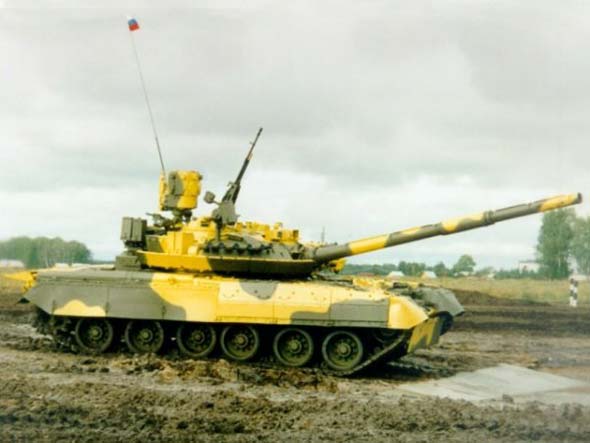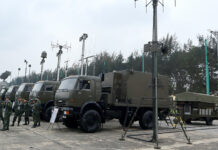A more complete hemispheric protection is the Russian Arena E – developed by the Russian company KBM. The system is designed to protect the tank from attacks of anti-tank guided missiles launched from the ground and by attack helicopter and lightweight anti-tank grenades (such as RPG). The system weighs between 1 – 1.3 tons (depending on the coverage and configuration) and uses a fixed, omni-directional radar, that covers a sector of 220 – 290 degrees around the tank. The protective charges are housed in a “belt” of 22-26 protective charges (depending on the turret size and shape), each positioned to cover a specific sector. Once an incoming threat is detected by the radar, the system ejects a charge above and sideways from the tank, to a position best suited for intercepting the target. As the charge explodes, it throws a deadly hail of fragments downward, to shutter and destroy the incoming projectile.

The system is capable of engaging incoming missiles, at speeds ranging from 70 to 700 meters per second. The system creates a virtual “cone” shaped shield at a radius of 20-30 meters from the tank, and its response time, from target detection to destruction is 0.07 seconds. When the system is triggered, a warning signal is activated, to warn infantrymen that may be following the tank to open some distance or take cover. The status of the Arena E system is unclear, although the system was seen in public since the mid 1990s, it is believed that funding problems delayed final development and deployment of the system.
While Arena-E provides an effective protection against many types of anti-tank threats, from RPGs to fast missiles such as Hellfire and TOW, it cannot defeat fast missiles (such as HVM) and tank projectiles, such as HEAT shaped charge projectiles and APFSDS penetrators. Different countermeasures are being examined to defeat these threats, including the deployment of steel bars, which are accelerated into the projected flight path of the incoming projectile. The kinetic energy discharged from the collision between the steel bar and the projectile can disintegrate or destabilize the projectile, shift it from its course, or cause it to hit the target at angles that do not facilitate effective penetration.
















